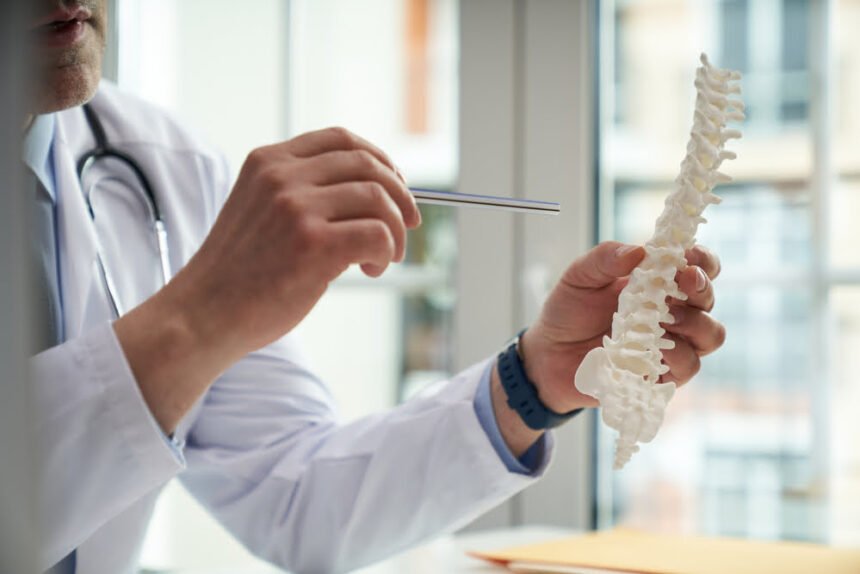We have our spines to thank for the ability to stand upright, sit down, walk, bend, and twist. Without this remarkable structure of the human body, our lives would look very different.
Unfortunately, for all of its strengths, the spine is also particularly susceptible to injury and damage. After all, back pain is one of the most prevalent medical problems today and impacts 8 out of 10 people at some point in their lives.
Why Avoid Surgery?
In most cases, both patients and physicians want to avoid surgery whenever possible. This is usually due to the risks and complications associated with surgery, including bleeding, blood clots, and infection.
Additionally, spine surgery presents unique risks and concerns, including:
- Nerve damage
- Dural tear
- Lost bowel or bladder control
- Failed back surgery syndrome
Many patients aim to avoid spinal fusion, in particular, for the specific downsides that it presents. Since it involves fusing two or more of the vertebrae in the spine, fusion can severely restrict patients’ mobility and physical activities. Fusion can also lead to increased degeneration of the adjacent spinal segments (known as adjacent segment disease).
Spinal Conditions That Need Surgery To Be Cured
Most patients with the spinal conditions listed below don’t require surgery to overcome pain and other symptoms. However, non-surgical treatments can’t cure these conditions – they can only help with symptom management.
Spinal Stenosis
Spinal stenosis develops when the open space in the spinal canal tightens, becoming narrower and more restricted. This may not trigger immediate symptoms. But, as spinal stenosis becomes worse over time, it can lead to:
- Chronic lower back pain
- Sciatica
- Numbness, tingling, and weakness in the extremities
- “Foot drop”, which is a sensation of weakness while trying to lift up the foot or toes
Spinal stenosis is usually caused by osteoarthritis-related spinal degeneration. It can also result from thickened spinal ligaments, a traumatic injury to the spine, and herniated discs.
In most cases, spinal stenosis is effectively managed without surgery. But, it’s impossible to open the spinal canal back up without surgery. For spinal stenosis, surgery generally involves spinal decompression and, in some cases, spinal fusion.
Spondylolisthesis
Spondylolisthesis is a spinal disorder that develops due to spinal instability. It commonly occurs in young athletes as a result of spondylolysis (a stress fracture in the pars interarticularis). However, spondylolisthesis may also be caused by age-related spine degeneration.
With spondylolisthesis, one of the bones of the spine slides out of alignment, settling on the bone directly below it. If the misaligned vertebra presses on the spinal cord or nearby spinal nerves, it can cause:
- Chronic lower back pain
- Spasms and tightness in the hamstring muscles
- Stiffness in the lower back
- Weakness, numbness, and tingling in the extremities
The treatment of spondylolisthesis varies depending on the grade of the vertebral slippage. The patient’s age, symptoms, and general health are also taken into account. For most cases of spondylolisthesis, however, non-surgical therapies are sufficient.
With that said, surgery is the only cure of severe spondylolisthesis. Non-surgical methods can’t bring the slipped vertebra back to its proper position.
Herniated Disc
A herniated disc is a common injury. It occurs when one of the discs that cushion the spine weakens. The soft disc interior may then protrude through a crack in the disc exterior.
When a herniated disc presses on nearby nerves, the patient may experience:
- Chronic back pain
- Muscle weakness
- Tingling, burning, and/or aching sensation in the area of the back with the herniated disc
- Pain that radiates to the extremities
In most people, a herniated disc will heal over time with non-surgical treatment methods. However, to fully cure a herniated disc, surgery is required. A small portion of herniated disc patients may need surgery for relief from chronic back pain and neurological symptoms.
Scoliosis
Scoliosis is an abnormal curve in the spine. It’s often present at birth, but it can also develop later in life due to age-related spinal degeneration.
Patients with scoliosis may experience symptoms including:
- Back pain
- Back stiffness
- Abnormal gait
- Neurological symptoms in the legs
- Lost height
- Leaning to one side
- Uneven shoulders or waist
- Poorly-fitting clothing
Usually, scoliosis is managed successfully with exercise, physical therapy, chiropractic treatment, medical observation, and/or bracing. However, to physically correct the curve in the spine, patients will need to undergo surgery. This is rarely necessary.
Bone Spurs
Bone spurs are lumps of excess bone that develop on the ends of existing bone tissue. These bony growths can develop in several different areas of the spine, including the spine.
If a bone spur impinges a spinal nerve, the patient may experience back pain and neurological symptoms. Non-surgical therapies can often help alleviate these symptoms, but the bone spur won’t simply go away. Surgery is the only sure-fire way to remove the entire bone spur from the spine.
Is Spine Surgery Safe?
We’ve already mentioned that many patients are hesitant to undergo spine surgery because of the associated risks and complications. However, spine surgery has been safely performed for decades, and complications are rare. So long as you select a spine surgeon with excellent training, credentials, and experience, you’ll have a high chance of a successful outcome.
You can also be proactive and lower your risk of spine surgery complications by:
- Quitting smoking
- Eating a nutrient-rich diet and staying hydrating before and after the procedure
- Telling your surgeon about all of the medications that you take in advance of the procedure
- Staying mobile after the procedure (while adhering to your surgeon’s guidelines)
- Following all of your surgeon’s pre-and post-operative instructions
Additionally, opting for a minimally-invasive spine procedure, if possible, can reduce your risk of complications. Modern medical research has formed the path to minimally-invasive spine surgery for the conditions discussed in this article.








